-
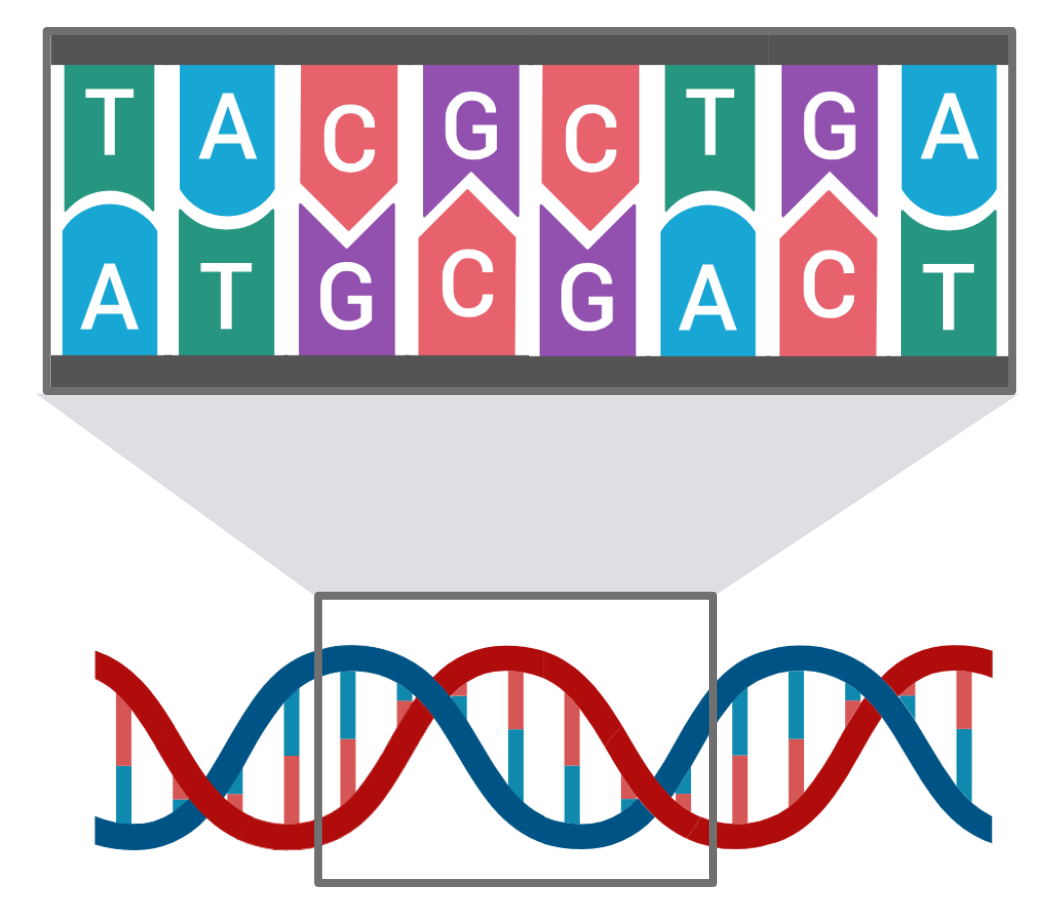
Genetic Code Overview
Here’s an excerpt from the provided text on the Genetic Code: The **Genetic Code** is a universal set of rules essential for translating genetic information into functional proteins. It operates on a **triplet code** system, where each **codon**, composed of three nucleotides, corresponds to a specific amino acid. This code is **non-overlapping** and **degenerate**, meaning…
-

Activation of the Mammalian Egg
In mammalian eggs, the rise in cytoplasmic calcium ions (Ca2+) plays a crucial role in egg activation. Sperm-induced Ca2+ waves trigger events such as meiosis resumption, cortical granule exocytosis, and maternal mRNA release. Surprisingly, sperm-derived PLCζ, delivered during gamete fusion, is essential for Ca2+ oscillations and successful egg activation. These oscillations, regulated by various proteins,…
-
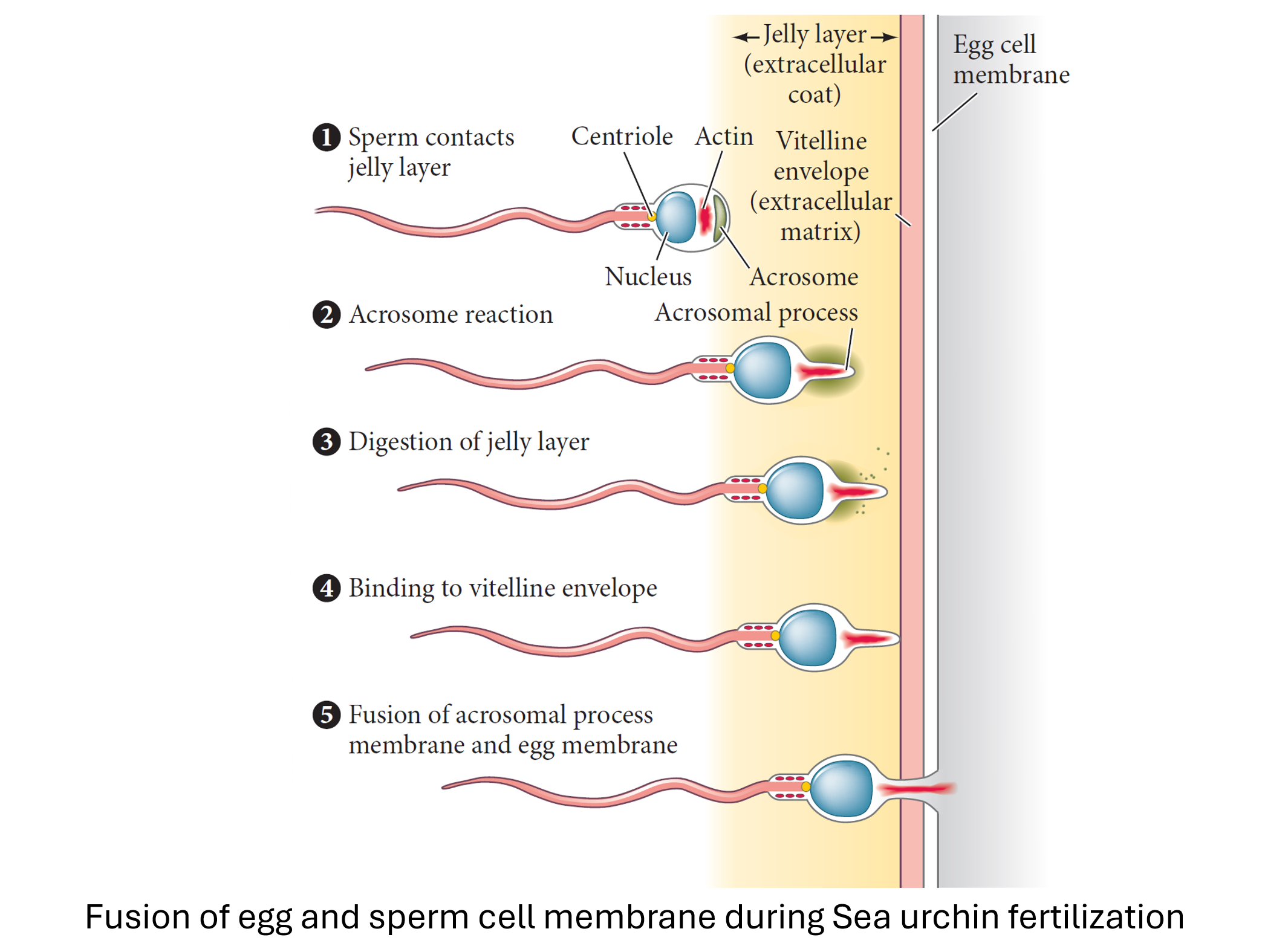
Fertilization
In the intricate dance of fertilization, mammalian eggs undergo fascinating processes. From pronuclear migration and DNA uncoiling to the interplay of mitochondria and cytoplasmic contributions, each step contributes to the formation of new life. Sperm-egg interactions, centrosomes, and the orchestration of mitotic spindles—all converge in this remarkable journey.
-
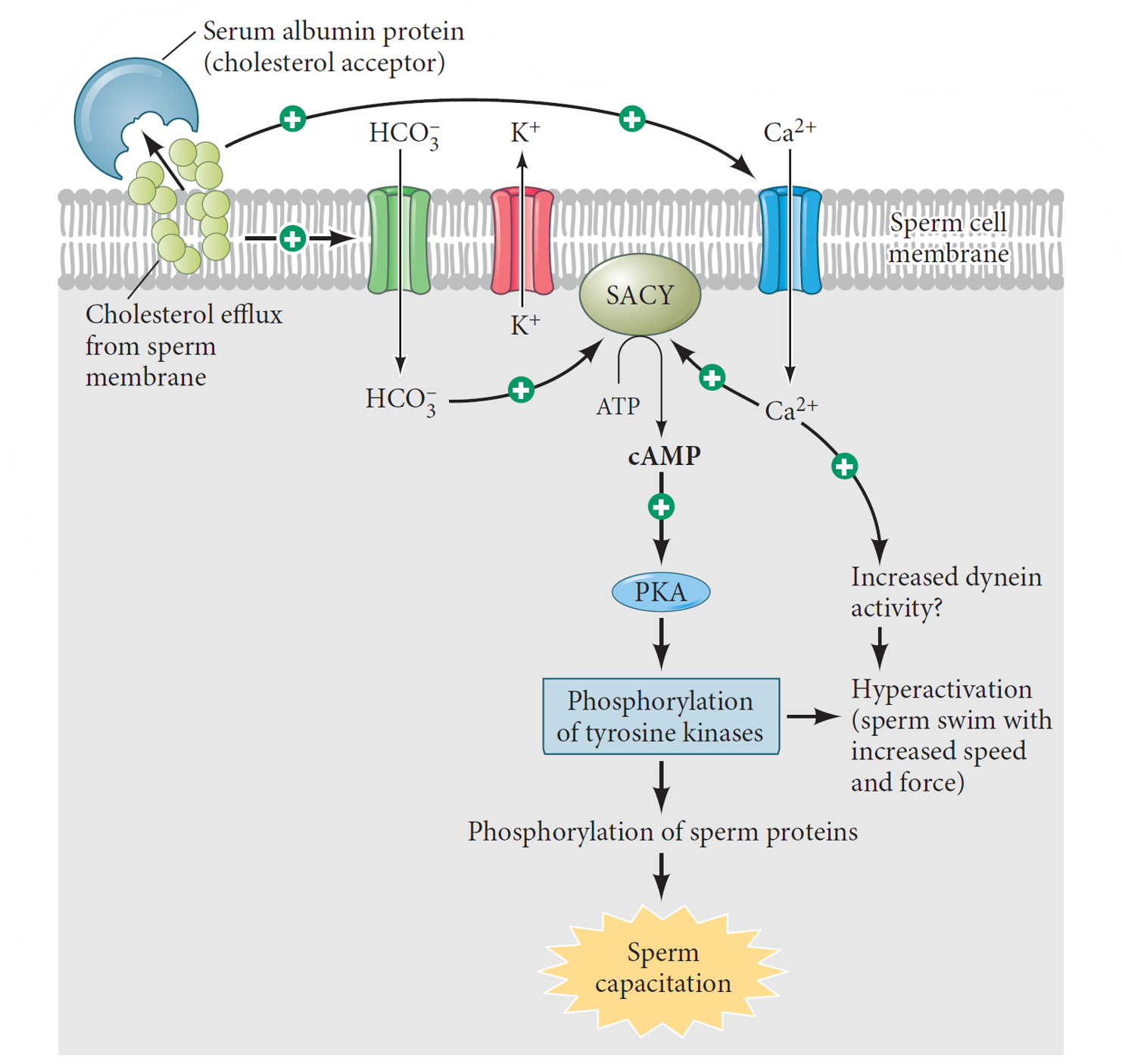
Mammalian Fertilization: Capacitation
Capacitation is a vital process that enables mammalian sperm to fertilize an egg. Unlike amphibians or sea urchins, mammalian sperm are initially immature and require capacitation during their journey from the vagina.
-

Conformation of Protein
Protein conformation plays a crucial role in the understanding of protein function, stability, and interactions with other molecules. Scientists have employed various methods to unravel the intricate three-dimensional structures of proteins. X-ray crystallography utilizes X-ray diffraction to precisely determine the atom locations in protein crystals, while NMR spectroscopy exploits the magnetic properties of atoms in…
-

Canal system in Porifera
The canal system in porifera plays a crucial role in their morphology, physiology, and adaptation to different marine environments. Porifera, commonly known as sponges, are aquatic animals characterized by their porous body structure and the presence of a system of canals and channels. This system allows for the efficient movement of water and nutrients throughout…
-
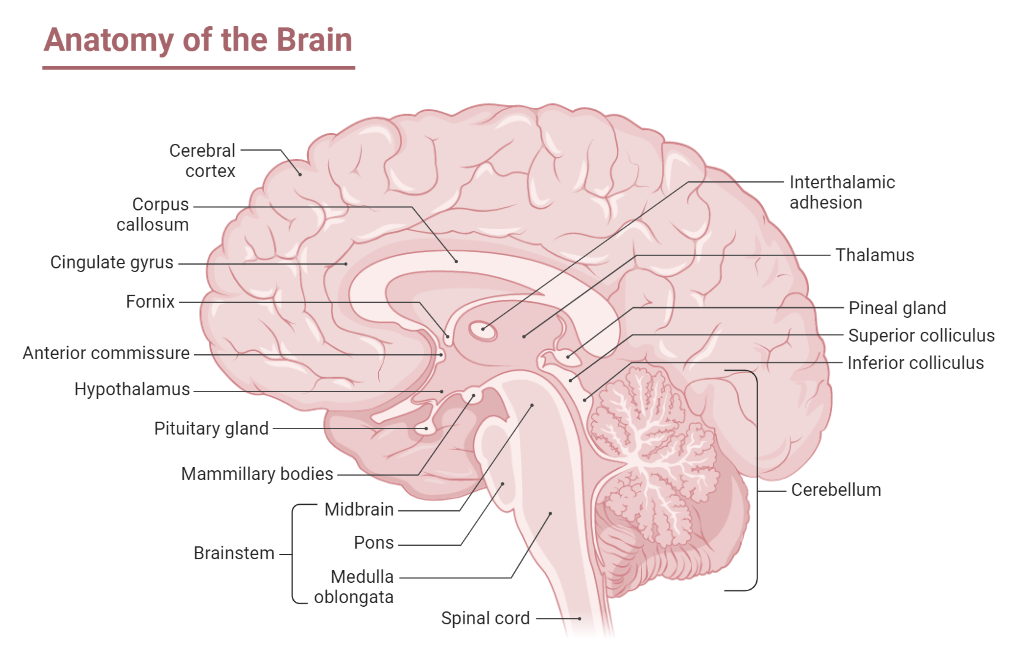
Human Brain
The brain is the most sophisticated organ in the human body, directing and coordinating all of the body’s operations. It is divided into three sections: the forebrain, the midbrain, and the hindbrain. Forebrain Thalamus and hypothalamus Midbrain Cerebellum To summarise, the brain is a highly complex and detailed organ, with diverse areas and structures specialised…
-

Prokaryotic DNA Replication
Prokaryotic DNA replication is a tightly regulated and coordinated process in which bacterial cells duplicate their genetic material before cell division. The process is semi-conservative and includes the initiation, elongation, and termination of replication, involving enzymes such as DNA polymerase, primase, and helicase. The replication is initiated by the binding of the replication initiator protein…
-
Mendel’s Laws of Inheritance
Gregor Mendel’s groundbreaking research on pea plants led to the formulation of two fundamental laws of inheritance. The Law of Dominance explains how dominant and recessive traits are inherited, while the Law of Segregation elucidates the separation of alleles during meiosis. The Law of Independent Assortment further reveals the independent inheritance of different traits. These…
-
Structure of Egg
Delve into the intricate structure of mammalian eggs, from their cytoplasmic components to their nucleus, membrane, and interactions with sperm. Understand the crucial role of fertilization and egg development in the reproductive process.
-
Embryonic Homology
Embark on a journey into the realm of embryonic homology, uncovering the intricate relationships between structures derived from common ancestors. Distinguish homology from analogy and explore how developmental changes drive evolutionary transformations. Dive into the world of artificial selection and gene mutations, unveiling their roles in shaping diverse species.
-
Commitment in Embryonic Development
Dive into the intricate process of commitment in embryonic development, where undifferentiated cells transform into specialized types. Explore the stages of specification and determination, and how cell fate and complex structures are shaped. Uncover the strategies various species employ in this fundamental journey.
-

Gastrulation: The Foundation of Life
Explore the pivotal process of gastrulation in animal development. Learn how cells rearrange to form germ layers, creating the foundation for body structures and axes. Understand the significance of this stage as we delve into movements, axes development, and its crucial role in shaping organisms.
-

The Cycle of Life in Frogs
Delve into the intricate life cycle of the leopard frog Rana pipiens, from the inception of gametogenesis and fertilization to the transformative journey of metamorphosis. Explore the stages of cleavage, gastrulation, and organogenesis that shape this remarkable amphibian’s development. Witness the astonishing metamorphosis from tadpole to land-dwelling adult frog. This essay provides a captivating insight…
-

The Cycle of Life
Embark on a journey through the intricate cycle of life, spanning the developmental odyssey of animals. Explore the stages from fertilization to birth, metamorphosis, and gametogenesis. Witness how cells rearrange, germ layers form, and organs emerge during organogenesis. Uncover the transformative power of metamorphosis and the pivotal role of gametogenesis in perpetuating life. This overview…
-

Structure of Mammalian Sperm
Delve into the intricate world of mammalian sperm structure, where specialized cells undergo complex development to fulfill their crucial role in fertilization. Explore the components that make up sperm – the streamlined nucleus, enzymatic acrosome, and propelling flagellum. Uncover the dynamic process of capacitation, fine-tuning sperm for successful egg binding and fertilization. Discover how dynein…
-
Sex Determination in Drosophila
Drosophila, commonly known as fruit flies, have long been a staple in genetic and developmental biology research. One of the most fascinating aspects of Drosophila biology is their sex determination process, intricately tied to their genetic makeup. The sex of these tiny organisms is dictated by a single pair of sex chromosomes, X and Y.…
-
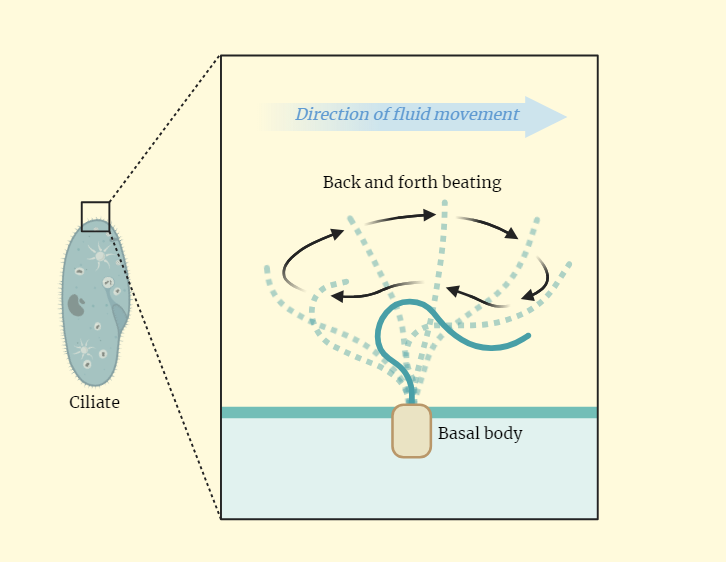
Ciliary locomotion
Explore the fascinating world of ciliary locomotion, where intricate hair-like structures known as cilia orchestrate a symphony of coordinated movement. These remarkable projections, found on certain cell surfaces, serve as nature’s propellers, driving processes vital to life. Delve into the mechanics of cilia, composed of microtubules arranged in an elegant “9+2” pattern. These structures, anchored…
-
Flagellary locomotion in euglena
Dive into the captivating realm of flagellar locomotion in Euglena, where whip-like flagella orchestrate intricate movements. Explore the molecular symphony of dynein motor proteins propelling these single-celled organisms, enabling navigation, feeding, and light-sensing. Uncover the secrets of metachronal waves and the elegant “9+2” microtubule arrangement. Join us in deciphering the remarkable world of flagellar dynamics…
-
Ciliary Locomotion in Paramoecium
Embark on a journey into the intricate world of ciliary locomotion in Paramoecium, where tiny hair-like cilia orchestrate remarkable movements. Explore the molecular choreography driven by dynein motor proteins, propelling this single-celled wonder through water. Delve into the “9+2” microtubule arrangement, unveiling the metachronal wave phenomenon. Witness cilia’s multifaceted role – from aquatic navigation to…
-

Secondary Sex Determination in Mammals
Explore the intricate realm of secondary sex determination in mammals, where hormones and genetic interplay shape diverse phenotypes. Uncover the two major phases and hormonal cues guiding the development of sexual characteristics. From internal and external genitalia to reproductive ducts, delve into the journey of female and male phenotypes. Discover conditions like pseudohermaphroditism and true…
-

Chromosomal Sex Determination in Drosophila
Discover the unique chromosomal sex determination in Drosophila, where the intricate interplay of genes and chromosomes orchestrates sex. Dive into the captivating journey of how the X chromosome, Sex-lethal gene, and a cascade of molecular events shape sex-specific traits. Uncover the pivotal roles of transformer, doublesex gene, and transcription factors in steering the course of…
-

Flagellar movement
Embark on a journey into the world of flagellar movement, where whip-like flagella orchestrate cellular dynamics. Traverse the intricate structure of microtubules, unravel the motor proteins propelling these movements, and decode the biochemical signals triggering their activation. From sperm’s voyage through the female reproductive tract to bacteria’s quest for sustenance, discover how flagella’s synchronized beats…
-

Human Nervous System
The human nervous system, a marvel of complexity, orchestrates communication and control throughout the body. Delve into its realms, from the intricate structure of neurons to the profound functions of the brain. Explore how sensory perception and motor responses are coordinated, while uncovering the mechanisms behind learning and memory. Discover the interplay of the central…
-

Ciliary movement
Discover the intricate world of ciliary movement—a remarkable process driven by tiny hair-like structures called cilia. From their structural composition to their role in propelling cells, fluids, and particles, delve into the mechanisms underpinning this fascinating phenomenon. Explore how cilia’s coordinated motion aids in functions like mucociliary clearance in the respiratory tract, fluid transport in…
-

Adrenal gland
The adrenal glands, located on top of each kidney, are essential endocrine organs responsible for producing and releasing hormones that regulate various physiological processes. This in-depth study note explores their location, histology, functions, and clinical significance. Understanding the adrenal glands is crucial for comprehending their role in maintaining stress response, metabolism, electrolyte balance, and blood…
-

Renin-Angiotensin System (RAS)
Explore the intricate workings of the Renin-Angiotensin System (RAS), a crucial endocrine system responsible for blood pressure regulation and fluid balance. Dive into the functions of renin, angiotensin I and II, and their role in vasoconstriction and aldosterone release. Discover the clinical significance of RAS dysregulation and the use of RAS inhibitors in managing hypertension…
-

Nephron – The Functional Unit of the Kidney
Explore the intricate details of the nephron, the functional unit of the kidney responsible for filtration, reabsorption, and secretion. Gain a comprehensive understanding of its structure, including the renal corpuscle and renal tubule. Discover the vital functions of the nephron in maintaining fluid and electrolyte balance, and its role in urine formation.
-

Mechanism of Urine Formation by the Kidney
Explore the intricate mechanism of urine formation by the kidney, involving filtration, reabsorption, and secretion. Discover how the kidney maintains fluid and electrolyte balance while regulating the concentration and dilution of urine. Understand the role of hormones in this vital physiological process.
-

Atomic Force Microscopy (AFM)
Atomic Force Microscopy (AFM) is a powerful imaging technique used to visualize and manipulate materials at the nanoscale. By scanning a sharp probe over a sample surface, AFM measures the interaction forces between the probe and the sample, providing high-resolution images and information about surface properties. This study note delves into the principles, instrumentation, operational…
-

Phase Contrast Microscopy
Discover the power of a phase contrast microscope, an essential tool for enhancing sample contrast in fields like biology and materials science. Learn about its components, working principle, and applications in studying cell structures and analyzing materials. Explore the advancements in microscopy techniques and scientific instruments for improved research and imaging capabilities.
-

Light Microscopy
Light microscopy is a versatile technique used in various scientific disciplines such as biology, chemistry, and materials science. By illuminating a sample with light and capturing the transmitted image, this essential tool enables the study of cell structure, materials analysis, and scientific research. With its simplicity and ability to produce high-resolution images, light microscopy plays…
-

Fluorescence Microscope
A fluorescence microscope is an essential tool in science and technology, enabling high-resolution imaging of samples using fluorescence techniques. It is widely used in biology, chemistry, and materials science for analyzing cell structures, molecular imaging, and sample analysis. By exciting specific molecules and selectively detecting fluorescence, it provides valuable insights into biological samples and their…
-

Confocal Microscope
Embark on a fascinating journey into the world of confocal microscopy. Discover its role in high-resolution imaging, sample preparation, and applications in biology, chemistry, and materials science. Uncover the groundbreaking advancements made possible by selectively detecting fluorescence, enabling detailed study of biological samples and components. Witness the transformative power of confocal microscopy in unlocking the…
-

Transmission Electron Microscope (TEM)
Embark on a journey through the world of transmission electron microscopy (TEM). Explore its significance in materials science, biology, and chemistry. Discover the remarkable high-resolution imaging capabilities, sample preparation, and applications across various fields. Uncover the instrumental role of TEM in advancing scientific knowledge and understanding through its ability to reveal the internal structure of…
-

Scanning Electron Microscope (SEM)
Discover the powerful world of scanning electron microscopy (SEM). Explore its working principle, from the electron gun to image analysis. Uncover its applications in materials science, biology, geology, and semiconductor manufacturing. Gain insights into the remarkable high-resolution imaging capabilities of SEM and its significant impact on scientific discoveries and advancements.
-

Phospholipid Movement
Phospholipids, essential components of cell membranes, play a pivotal role in maintaining membrane integrity. Explore the dynamic movements of phospholipids through lateral and transverse diffusion, as well as the crucial processes of fusion and fission. Gain insights into the intricate dynamics of cell membranes and their significance in cellular function.
-

Thyroid Hormone Biosynthesis
Thyroid hormone biosynthesis is a complex process that takes place in the thyroid gland. This in-depth study explores the steps involved, including iodide uptake, oxidation, organification, coupling reactions, and hormone release. The regulation of this pathway through feedback mechanisms is also discussed. Understanding thyroid hormone biosynthesis is crucial for comprehending thyroid disorders and developing effective…
-

Osmosis Process
Explore the fascinating process of osmosis, where water moves across membranes to balance solute concentrations. Learn about its principles, factors influencing it, and examples of osmosis in plant roots, kidney function, and cellular dehydration. Gain insights into how osmosis plays a crucial role in maintaining water balance and cellular function in living organisms.
-

Diffusion
Explore the fascinating process of diffusion, where particles naturally move from areas of high concentration to low concentration. Delve into the principles, factors, and examples of diffusion to understand its significance in various scientific fields and everyday phenomena. Gain insights into how temperature, molecular size, and concentration gradients influence this fundamental process.
-

Intracellular Transport
Intracellular transport is a vital process that ensures the proper functioning of cells by facilitating the movement of molecules, organelles, and structures within them. Two main categories of intracellular transport are vesicular transport and cytoskeletal transport. Vesicular transport relies on the use of membrane-bound vesicles to transport materials within the cell through processes like endocytosis…
-

Cytokines
Cytokines are vital signaling molecules that play a crucial role in the immune response. This detailed study explores the functions, types, and significance of cytokines in various physiological processes, including inflammation and cell growth. It delves into the two main categories of cytokines: pro-inflammatory and anti-inflammatory cytokines, shedding light on their roles in initiating and…
-

T Cell Maturation
T cell maturation is a critical process in the development of functional T cells, which are key players in the adaptive immune response. Starting in the bone marrow and progressing through the thymus, immature thymocytes undergo positive and negative selection, ensuring the survival of T cells that can recognize foreign antigens while preventing autoimmunity. Upon…
-

Inflammation: a biological response
Inflammation is a complex biological response triggered by the immune system in response to injury, infection, or tissue damage. This study provides insights into the key components and mechanisms of inflammation, including immune cell activation and cytokine release. It explores the two main types of inflammation: acute and chronic, highlighting their characteristics and associations with…
-

Adaptive Immune Response
The adaptive immune response is a powerful defense mechanism that comes into play when the innate immune response falls short in eliminating pathogens. This intricate system involves specific antibodies produced by B cells, which bind to antigens, such as viruses and bacteria, marking them for destruction. Antibodies can neutralize pathogens, impeding their ability to infect…
-

Immunoprecipitation
Immunoprecipitation (IP) is a powerful technique used to isolate and purify specific proteins or protein complexes from complex mixtures. Learn about the types, procedure, advantages, and applications of this technique in protein research and analysis. Discover how IP can help in studying protein-protein interactions, signaling pathways, post-translational modifications, and disease-related proteins.
-

Secondary Structures of Proteins
Protein secondary structure, including alpha helix and beta sheet, plays a vital role in protein function and stability. Explore their characteristics, discover their importance in drug design and protein engineering, and learn about their applications in biotechnology.
-

Mitochondria
Mitochondria are organelles found in eukaryotic cells responsible for generating energy in the form of adenosine triphosphate (ATP). Due to their essential role in cellular respiration, they are often referred to as the powerhouses of the cell. Mitochondria have a unique structure consisting of an outer membrane, intermembrane space, inner membrane, cristae, and matrix. They…
-

Centrioles : Structure and Function
Centrioles, cylindrical organelles found in the centrosome, play pivotal roles in cell division and cytoskeletal organization. Composed of triplet microtubules, they serve as the primary microtubule organizing center during mitosis, ensuring accurate chromosome segregation. Additionally, centrioles function as basal bodies, enabling the formation of cilia and flagella. Their influence extends to cell shape, intracellular transport,…
-

Cilia – Structure and functions
Cilia, the hair-like projections found on various cells in the body, are intricate structures with essential functions. From facilitating fluid and particle movement to detecting chemical and mechanical signals, cilia’s roles are diverse and vital. In this chapter, we delve into their structure, types, movement mechanisms, and their crucial contributions to various physiological processes. Understanding…
Categories
- Anatomy (9)
- Animal Form and Functions (38)
- Animal Physiology (65)
- Biochemistry (33)
- Biophysics (25)
- Biotechnology (52)
- Botany (42)
- Plant morphology (6)
- Plant Physiology (26)
- Cell Biology (107)
- Cell Cycle (14)
- Cell Signaling (21)
- Chemistry (9)
- Developmental Biology (36)
- Fertilization (13)
- Ecology (5)
- Embryology (17)
- Endocrinology (10)
- Environmental biology (3)
- Genetics (59)
- DNA (27)
- Inheritance (13)
- Histology (3)
- Hormone (3)
- Immunology (29)
- life science (76)
- Material science (8)
- Microbiology (18)
- Virus (8)
- Microscopy (18)
- Molecular Biology (113)
- parasitology (6)
- Physics (3)
- Physiology (11)
- Plant biology (26)
- Uncategorized (7)
- Zoology (112)
- Classification (6)
- Invertebrate (7)




